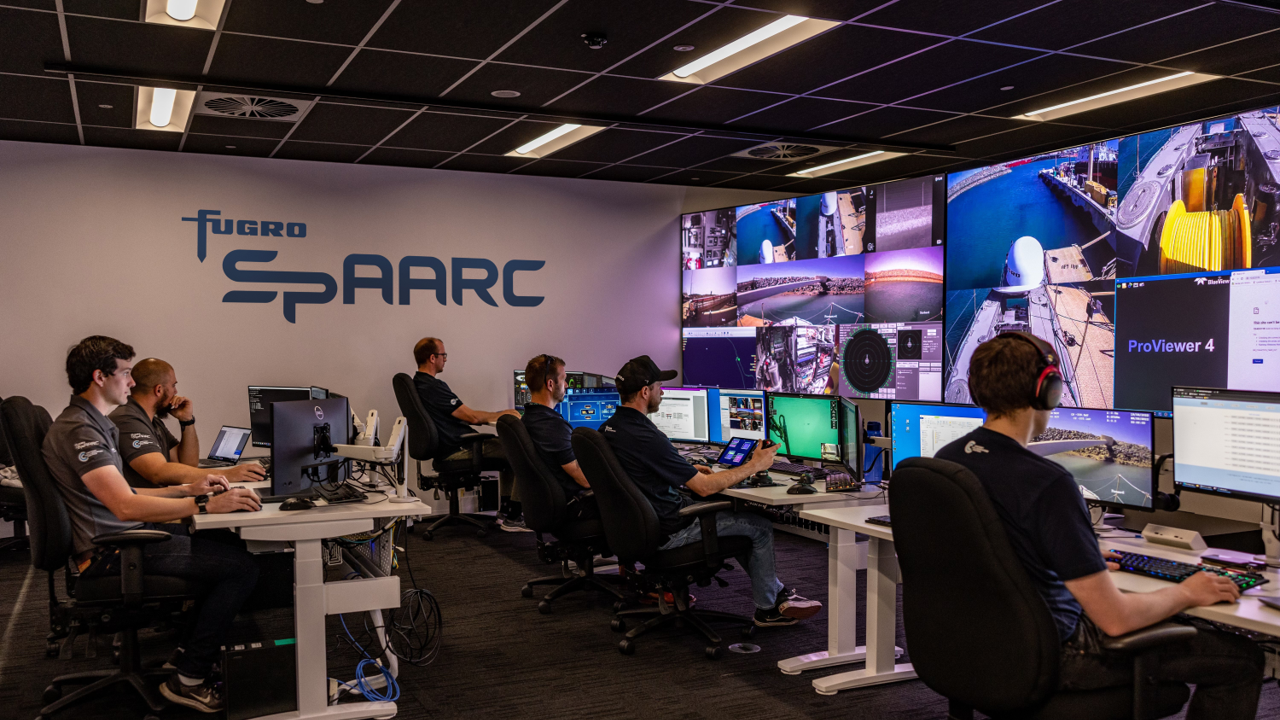Fugro Australia is now operating its brand new, world-class Australian Space Automation, AI and Robotics Control Complex (SpAARC). The facility aims to support research, innovation, create jobs and further build Australia’s own space industry ecosystem.
But Fugro wasn’t originally known as a space company. Its expertise has spilled over from the maritime sector into other complex operations, and now, space.
Director of SpAARC Samuel Forbes said: ‘We started out as a company deploying robotics and autonomous systems into the energy and maritime sector. It’s been a rapid journey, from deploying our first instance of remote operations, into mobilising fully uncrewed semi-autonomous maritime assets that exploit satellite technology.’
SpAARC opened in November 2022. It was a joint initiative between the Australian Space Agency, multinational geotechnical company Fugro and the Western Australian Government. The Agency contributed AU$4.5 million through its Space Infrastructure Fund (SIF). The SIF addresses gaps in our national space infrastructure, ensuring Australia can speed up delivery of space-based services and increase its global space contribution.
‘Australia already excels in large-scale remote asset management and Earth-based robotics in harsh environments,’ Head of the Australian Space Agency Enrico Palermo explains. ‘And by investing in infrastructure like SpAARC, the Agency is creating a unique opportunity for our organisations to grow into new global markets.’

As a multi-purpose operations, research and innovation hub, SpAARC has attractive benefits for local industry and overseas partners. The complex is becoming a leading example of how space infrastructure is critical to developing cross-cutting technologies. These technologies include robotics, advanced manufacturing, and artificial intelligence for Earth and beyond.
‘We wanted to ultimately create an Australian-based commercial facility to support remote robotic automations in harsh environments,’ Mr Forbes said. ‘[This will] also support space operations offering new solutions that help overcome the environmental challenges of space, including high assurance and high availability infrastructure.’
Fugro’s SpAARC can remotely manage and operate robotics in extreme terrestrial environments, such as subsea and land inspection robots. It can also control robotic systems in space. The latter means SpAARC can play an important role in complex future missions on the Moon.
SpAARC’s infrastructure can support the software simulation of space vehicles and systems to explore other planets. The complex simulates orbital mechanics and communication links with time delays. After all, controlling robots on Earth or in space has many similarities, because of the high latency of the network. Local robotics companies have collaborated with SpAARC and the complex has showed many remote robotic applications using satellite-controlled systems.
‘SpAARC has already attracted top talent from DARPA, NASA, Airbus, Surrey Satellites, and the U.S. Naval Research Laboratory,’ Mr Forbes said. ‘Though talent acquisition and development are ongoing, our initial efforts have been transformative.’
Fugro is a critical partner in the Australian Remote Operations for Space and Earth (AROSE) consortium. It is one of 2 successful Moon to Mars Trailblazer Stage One grantees. Trailblazer will call on Australia’s specialised skills in remote operations. A semi-autonomous lunar rover will give foundation services to support a NASA mission.
‘This mission is a bold step towards reshaping the narrative of remote robotic control in space – SpAARC is a fundamental part of this,’ according to Mr Forbes.
The final rover chosen will be designed, developed and tested locally. It will be deployed in the international Moon-to-Mars program as part of stage 2 of the Trailblazer mission. Its mission is to collect regolith (lunar soil) and deliver it to a NASA payload that will attempt to extract oxygen from the sample. This will be a major step towards a sustainable human presence on the Moon and supporting future missions to Mars.

